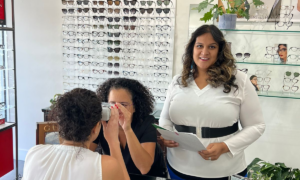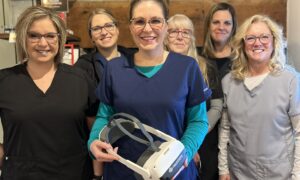
Photo credit: Getty Images
Insights into what your low vision patients are going through.
June 26, 2024
The Vision Council released a new research report featuring a comprehensive analysis of the experiences, diagnoses, information sources and treatment options for patients with low vision, as well as the impact on their caregivers.
The report, Focused inSights 2024: Low Vision, combines qualitative data from two focus groups with quantitative data from a nationally representative survey of patients and primary caregivers of patients with low vision.
Other Articles to Explore
“We’re proud to issue our latest Focused inSights report and present a valuable window into the lives of people living with low vision,” said Alysse Henkel, Vice President of Research and inSights at The Vision Council. “Through a mixed-method research approach, including two focus groups and a survey of 101 U.S. patients and caregivers, we set out to better understand the patient experience with low vision, especially in terms of how they learn about their condition and how they navigate finding specialists and treatment options. By understanding their challenges and needs, the vision community can work towards improving access to specialists, information, and awareness of effective treatments, ensuring a better quality of life for those living with low vision.”
Key Findings:
- Diagnosis and Referral: Most patients are diagnosed by eyecare professionals (90 percent), with optometrists and ophthalmologists playing a crucial role. However, referrals to low vision specialists are underutilized, particularly for those diagnosed more than 10 years ago.
- Information Sources: Doctors remain the primary source of information for 72 percent of patients, still, patients and caregivers increasingly use online resources like search engines (48 percent) and websites focused on low vision (34 percent), highlighting the need for clear and accessible online information.
- Terminology: While the term “low vision” is generally understood by patients and caregivers, and 62 percent of respondents believe that accurately describes their condition, some prefer alternative terms. This highlights the need for more nuanced language to describe the varying experiences of patients.
- Treatment Options and Challenges: Patients report having access to diverse treatments and assistive technologies, but one in five patients faced challenges in finding specialists.
- Impact on Daily Life: Blurred vision, difficulty in low light, and reading problems are common symptoms leading to significant lifestyle adjustments and emotional challenges.
A free summary of the report is available for download on The Vision Council Foundation website HERE. The full report is available for download in The Vision Council’s Research Download Center. It is complimentary for members of The Vision Council, with a paid option for non-members.



























